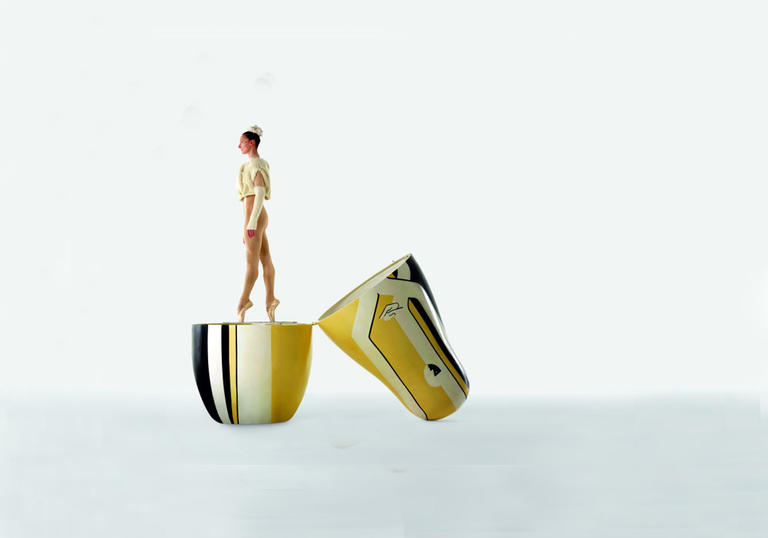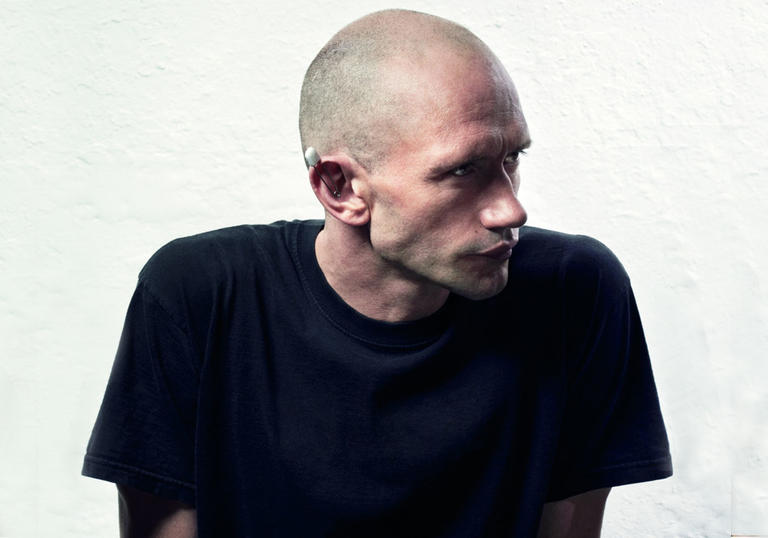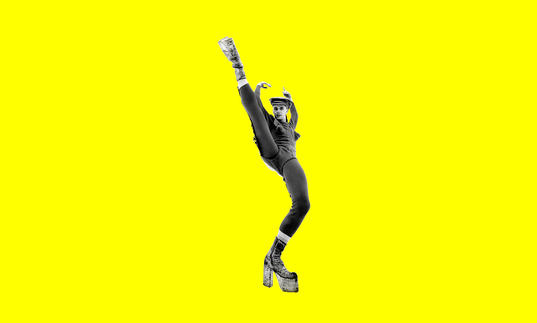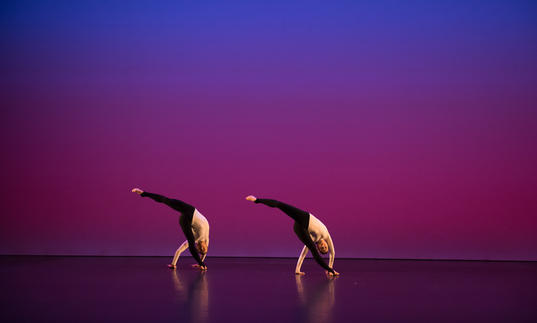As a major exhibition opens dedicated to the career of dancer and choreographer Michael Clark and his artistic collaborations, she tells us about what it’s like working with him, and the impact he’s had on the creative landscape.
Michael Clark may be a choreographer, but his work encompasses so much more. Film, music, fashion, visual art: all are absorbed into his incredible creative world.
He’s worked with the likes of pioneering filmmaker and video artist Charles Atlas, post-punk band The Fall, performance artist Leigh Bowery (described by Boy George as ‘modern art on legs’), and British visual artist Sarah Lucas.
Now, as we mark 15 years since Michael Clark Company became one of our Artistic Associates, immerse yourself in Clark’s world at a major exhibition looking over his artistic development to date.
What was your first experience of Michael Clark’s work, and how did you come to dance with him?
‘I was about 16 when I first encountered Michael’s work – I went to Sadler’s Wells to see No Fire Escape in Hell (1986) and later I Am Curious, Orange (1988). I was at the Royal Ballet School at the time and I really liked the juxtaposition Michael used against the various other visual elements on stage. There was so much to feast on.
When I left school, Michael was doing workshops at Pineapple Studios in central London, and I went along. It was like an audition and he invited me back, but at the same time I was offered a contract elsewhere so I didn’t work with him until 1998. At that time, Michael had just come back from a period of not making work. He was working with one dancer and I was invited along to the studio. I was working with the two of them, but after a while the other dancer decided to dance elsewhere. I wasn’t sure that I was part of the project – I’d been going in every day for three weeks and eventually just turned to Michael and said “do I have a job, then?”. He said “of course!”. It didn’t feel like a formal audition as there wasn’t a big company structure. It was more natural and personal.’
Michael Clark is renowned for working across disciplines, blending fashion, visual arts, choreography, film, and photography. What draws him to that?
‘Michael’s work introduced me to the idea of working with other disciplines. He has quite specific tastes but he doesn’t always work with things he likes – he sometimes enjoys challenging himself to do something else. More than anyone I’ve met, Michael understands the benefit of having the influence of other works to stimulate the imagination.’
You have to be able to work quickly and not only grasp sequences of steps, but reproduce them to a high standard. Michael gives his dancers the opportunity to find out for themselves what the work is.
Are there any collaborations that stand out to you, and why?
‘Charles Atlas has produced many standout pieces of video work in collaboration with Michael. A particular favourite of mine was his projection on to the huge dance floor as part of the Turbine Hall project at Tate Modern which added a striking visual layer on top of the choreography and the music, to complete the artwork.’
What’s Michael Clark like to work with?
‘Michael is very exacting to work with, which is the draw for me. The work demands technique and concentration because Michael is so precise. Also, he can execute movement so beautifully which is a wonderful aid to learning his choreography. I have always aspired to dance as well as him. Working with him is often fast-paced. You have to be able to work quickly and not only grasp sequences of steps, but reproduce them to a high standard. Michael gives his dancers the opportunity to find out for themselves what the work is. He encourages them to focus on the craftsmanship of dancing. Now that I see the works from the audience I appreciate them in a different way. As a performer I never saw these pieces because I was on stage.’
Which of Michael Clark’s works most stand out in your memory?
‘Choosing a favourite work is like choosing a favourite child – it’s impossible because they’ve all been extraordinary. But I think the project which ran across three different venues: the Turbine Hall at the Tate Modern, the Whitney Museum in New York and the Barrowland Ballroom in Glasgow, was special. Working with non-professional dancers all of whom brought enormous enthusiasm and appetite to learn and try something new and difficult, was inspiring and humbling. Another favourite of mine is the Stravinsky Project, which Michael embarked upon when we came to the Barbican. It was extraordinary to dance three Stravinsky works played by a live orchestra.’
I think the accessibility of his work is important to Michael. He likes to appeal to people, although he’d never do something just for the sake of being popular
What do you think is Michael Clark’s enduring influence?
‘One of my favourite critics’ quotes is “Michael’s work is never boring” and I couldn’t agree more. He has an eye for keeping things contemporary and current. While he doesn’t make overtly political work, I’ve always thought of his work as being incredibly diverse. The people he chooses to work with – whatever their gender, background, race – none of that matters to him as much as their essence as a human being. He is very good at just seeing something in a human at a space and time.’
His work is very accessible, particularly to people who aren’t familiar with dance – why do you think that is?
‘I think the accessibility of his work is important to Michael. He likes to appeal to people, although he’d never do something just for the sake of being popular. There are many different ways people find the work accessible – it might be that the music gives a way in, or the striking costumes, the lighting … there are all these different elements, and I think that’s what draws people in.’




